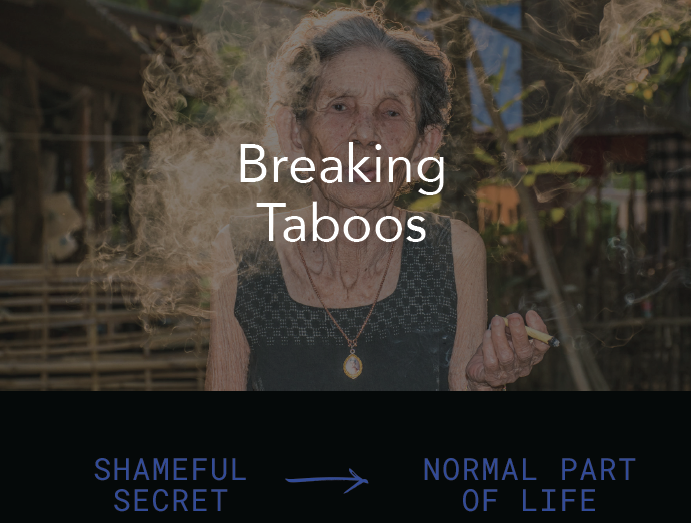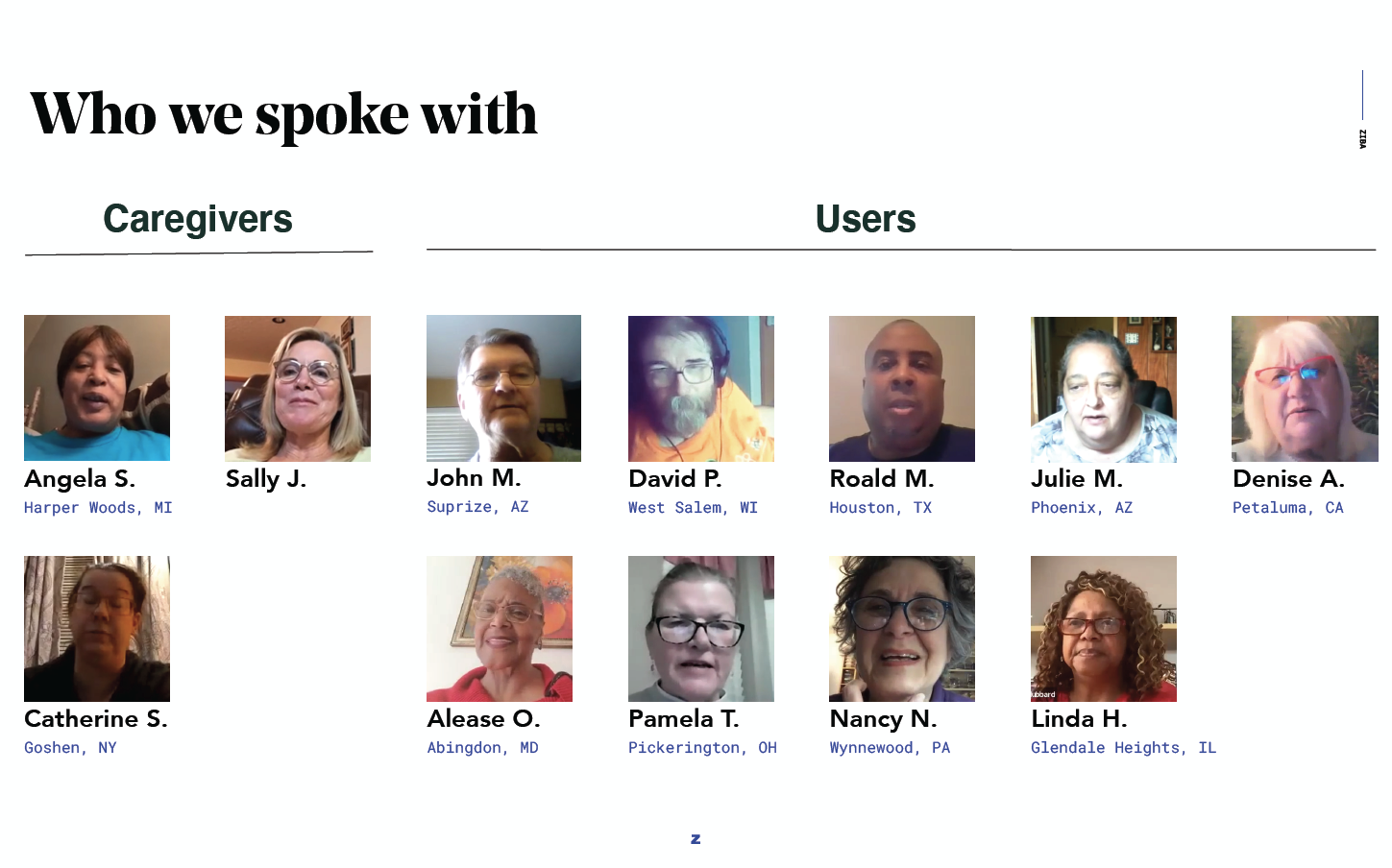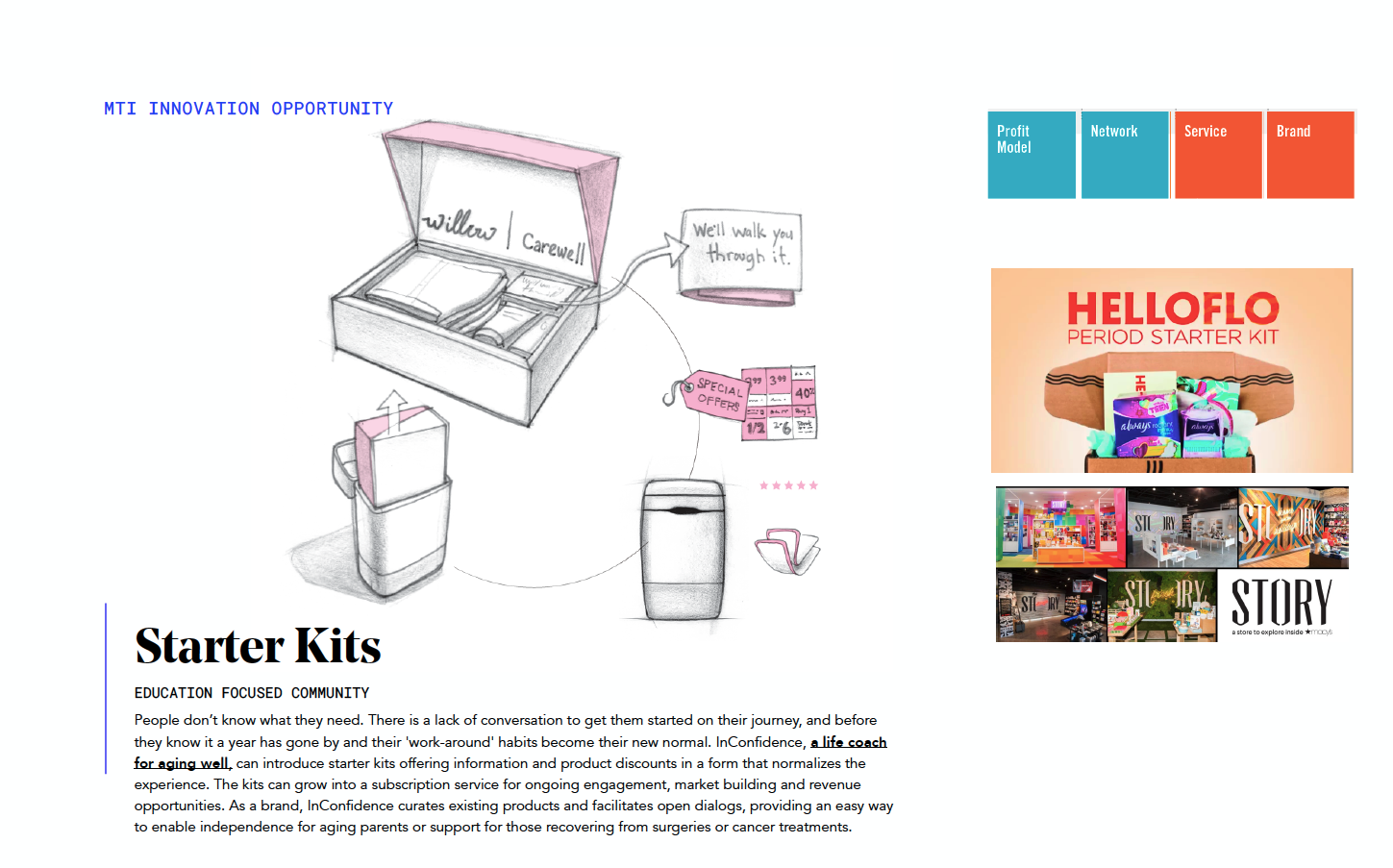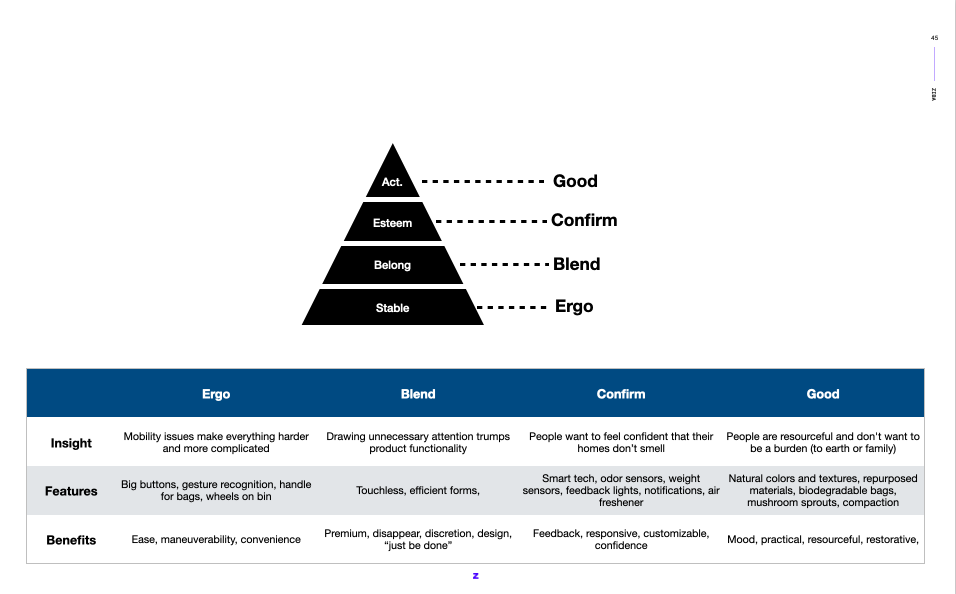-
OBJECTIVE
A startup came to us with an idea about a disposal system for adult diapers. They already had a solid ‘hunch’ about what they wanted, but before designing the “box”, we wanted to speak with users and explore the entire opportunity space.
-
DELIVERABLES
Primary and secondary research
Product concepts and design directions
TREND RESEARCH
-

How might we reframe incontinence as a normal health issue -- not a handicap?
-

How might universal design principles help us think more innovatively about incontinence?
-

How might we dispose of incontinence products in creative and conscientious ways?
USER INTERVIEWS
I interviewed a dozen people with incontinence (and some caretakers too) to understand their fears, motivations, and behaviors
SYNTHESIS
I distilled all primary and secondary research into crisp insight statements and design principles.
KEY INSIGHTS
-
Lack of Conversation
Incontinence tends to have a gradual onset that is shrouded in shame, secrecy, and denial. A lack of conversations and foresight means people cobble together workaround habits that get ingrained and never stop to ask if there might be a better alternative.
-
Confident Home
Social engagement is a key part of healthy aging. But odor is a deterrent from inviting people in. Although they say it’s under control, in truth, most are fearful/anxious about managing odor, and jump at the idea of an intentionally designed alternative.
-
Flush Away
Over and above the practical inconveniences of disposal, there’s a significant emotional burden of not being able to flush and “just be done” the way going to the bathroom used to be.
-
Caring for Caregivers
Beyond the needs of the individual, a dignified disposal system has the potential to improve the wellbeing of everyone involved–from friends and family to neighbors and nurses.
-
Resourceful Optimism
For the generation dealing with incontinence, disposable diapers were not the default. While cloth diapers might not be viable, they are seeking alternatives that reinforce pride and practicality and produce less waste.
MARKET POSITIONING
The primary opportunity is for aging adults, but there are secondary opportunities around sustainability and identity.
BRAND OPPORTUNITIES
I identified four potential ‘ways in’: Humor, Kindness, Technology, Sensuality
INNOVATION APPROACH
The client was a small company with limited design experience–just elder care. We wanted to take a step back and really evaluate what the end goal was. What kind of company do they want to be? We used Doblin’s multi-type innovation framework to expand the client’s mindset.
CONCEPTS
I developed concepts to show how the problem could potentially be solved without having to build the box.
Maybe they take a curation approach and re-package a set of existing products in kits?
Maybe they become a service provider and work directly with assisted living facilities?
ICONIC PRODUCT OPPORTUNITIES
I collaborated with an industrial designer to develop four design directions. Each direction aligns with a basic need.











